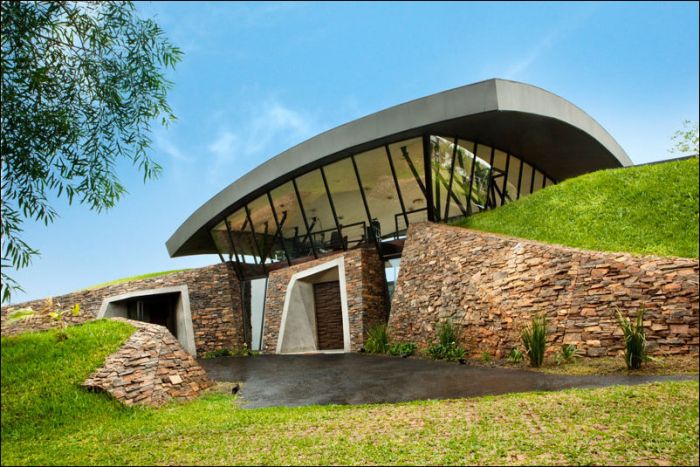In the current economic climate, self-build projects are proving more popular than ever. Whether you choose to do the work yourself or hire contractors to carry out the project, there are some things you need to take into consideration, especially if you want your property to be a ‘green’, eco-friendly home.

Here are some things to think about before you start planning your self-build eco-home project.
Choosing your Site
When you begin looking for a suitable site for your new home, there are a number of factors to consider. When you’ve found somewhere that you like, you should discuss the area with a local firm of land surveyors to ensure that it’s suitable.
Here are some key selection criteria on which you should base your choice.
Location
Unless you want to be totally out in the sticks and cut off from society, it’s crucial that your new home is near to community amenities, including schools, shops, medical facilities, and transport links.
In rural areas, check out your immediate neighbours. Dog boarding kennels, noisy car workshops, free-range poultry farms, and very busy factory premises can all make your country paradise unbearable after a short while and may also make it difficult to sell your home if you decide to move on in the future.
Aspect
Aspect refers to the direction in which the land faces. Residential dwellings benefit from a southern aspect in order to maximise light and improve the energy rating of your green home.
Slope
Although you ideally don’t want to buy land that is steeply sloping, a gentle slope is ideal, as this will facilitate natural drainage away from your house, reducing the risk of storm-water damage and making it easier to incorporate drainage.
Depth
The depth of the land available is very important as this will influence the size of the house and any outbuildings that you want to place on the land. However, the deeper the block of land, the longer the driveway that will be required, adding to the cost of your property.
Land Clearing
Bear in mind that if the land has lots of large trees growing on it, you will need to have these cleared before you can begin to build, which can add to your costs. Check also for old buildings that may contain asbestos, especially if these structures are built on concrete slabs that will require removal.
Mining and Subsidence
Always carry out research to see if the land has ever been used for mining. If there are old mine works on the land, there may be tunnels underneath it that could cause the land to shift and settle, causing subsidence. Unstable land requires any buildings on it to be underpinned, adding to your costs.
Natural Water Course
It is extremely important that you find out if there is a watercourse running underneath the land, which could cause flooding and serious damage during heavy rains. It’s worth commissioning a geotechnical report to make sure that you are not buying a world of trouble.
Windows
Although big, picture windows can provide you with a great view and plenty of natural light, they can also lose valuable heat in the winter and cause your home to become very hot in the summer months. This could mean that you have to use extra heating in the winter and more air conditioning during the summer, neither of which is good for your eco-friendly aspirations or your fuel bills.
You can combat these downsides and still enjoy the advantages of big windows by opting for the new generation of sash windows. Solar shades or tinted glass are a good idea too, especially if your windows are south-facing.
Insulating your Home
A low-energy home needs good-quality insulation to keep fuel bills low. If you’re having substantial amounts of building work carried out on your property, there are plenty of green insulation products available including wool, hemp, wood fibre, recycled paper and mineral fibre.
Saving Water
Saving water is especially important if you live in a remote, arid area and are reliant on a water tank or if you are city-dwelling and have a mains water meter. Save water by choosing special, low-water use showers, taps, and toilets.
Construction Materials
If you’re keen on making your home eco-friendly, it’s important that you make sure any timber that you’re using is obtained from sustainable forests. Ask your building contractor for their assurance that their lumbar is responsibly sourced, and use recycled materials and furnishings wherever possible.
Green Energy
One very good way of ‘greening-up’ your home is by investing in technology that will generate sustainable energy for your home.
If your local climate is very dry with hot, sunny summers, solar panels can be a really good energy-generating innovation. Coastal properties that are exposed to winds blowing in off the sea can benefit from a small wind turbine. Such technology can provide you with pretty good savings on your electricity bills, whilst using renewable energy sources, rather than relying solely on fossil fuels.
Undertaking a self-build can be a challenging project. Always spend time planning each phase of your build and always seek the advice of a professional if it’s your first time.



















